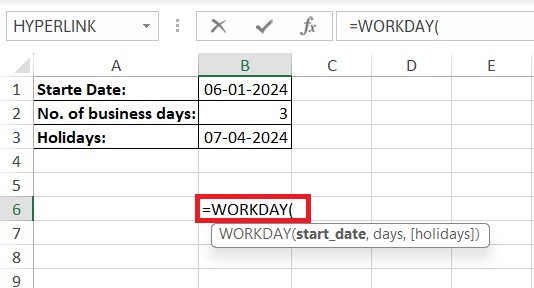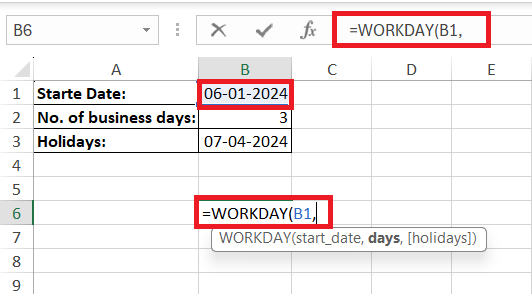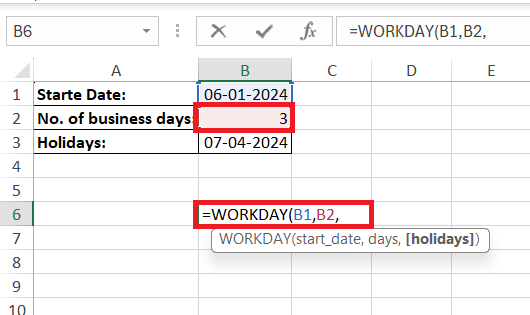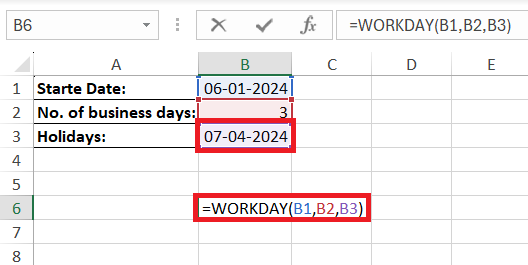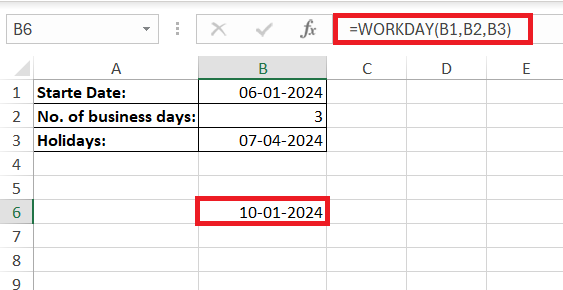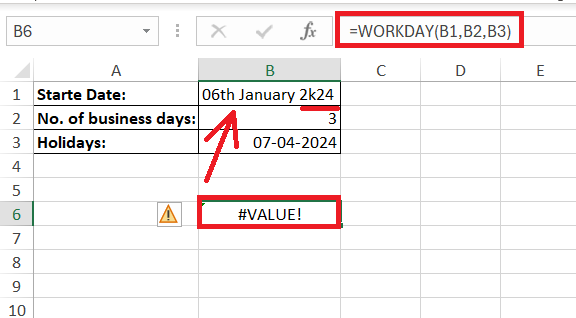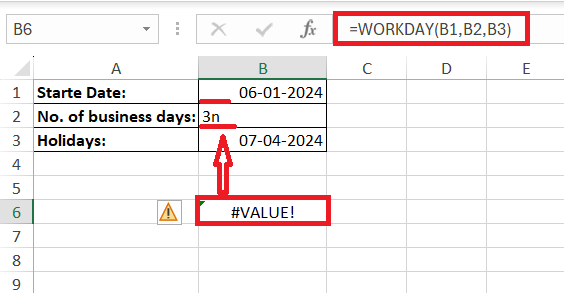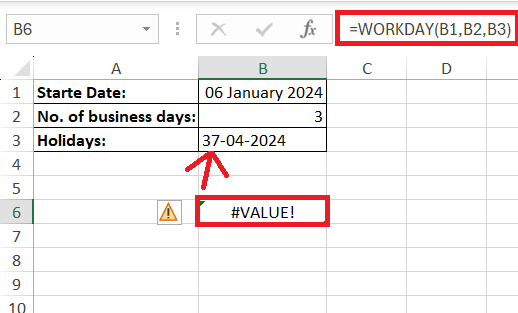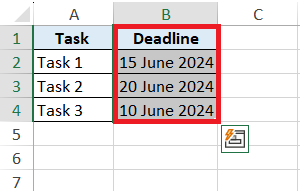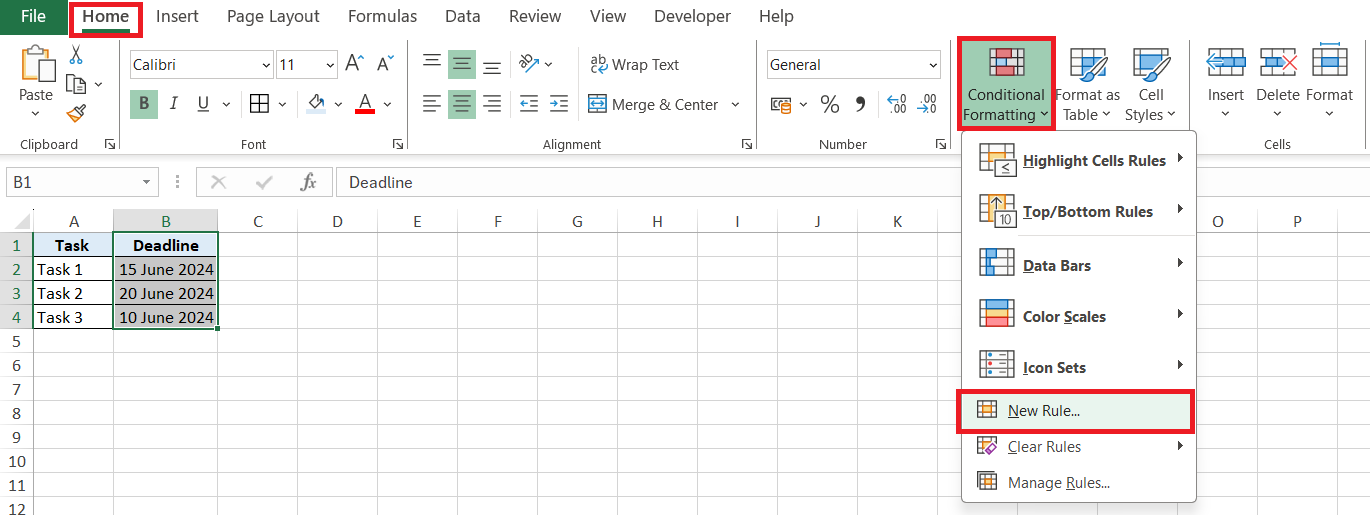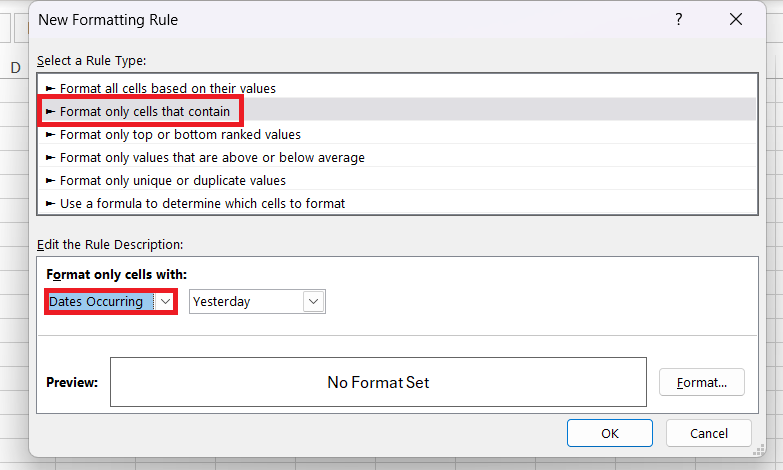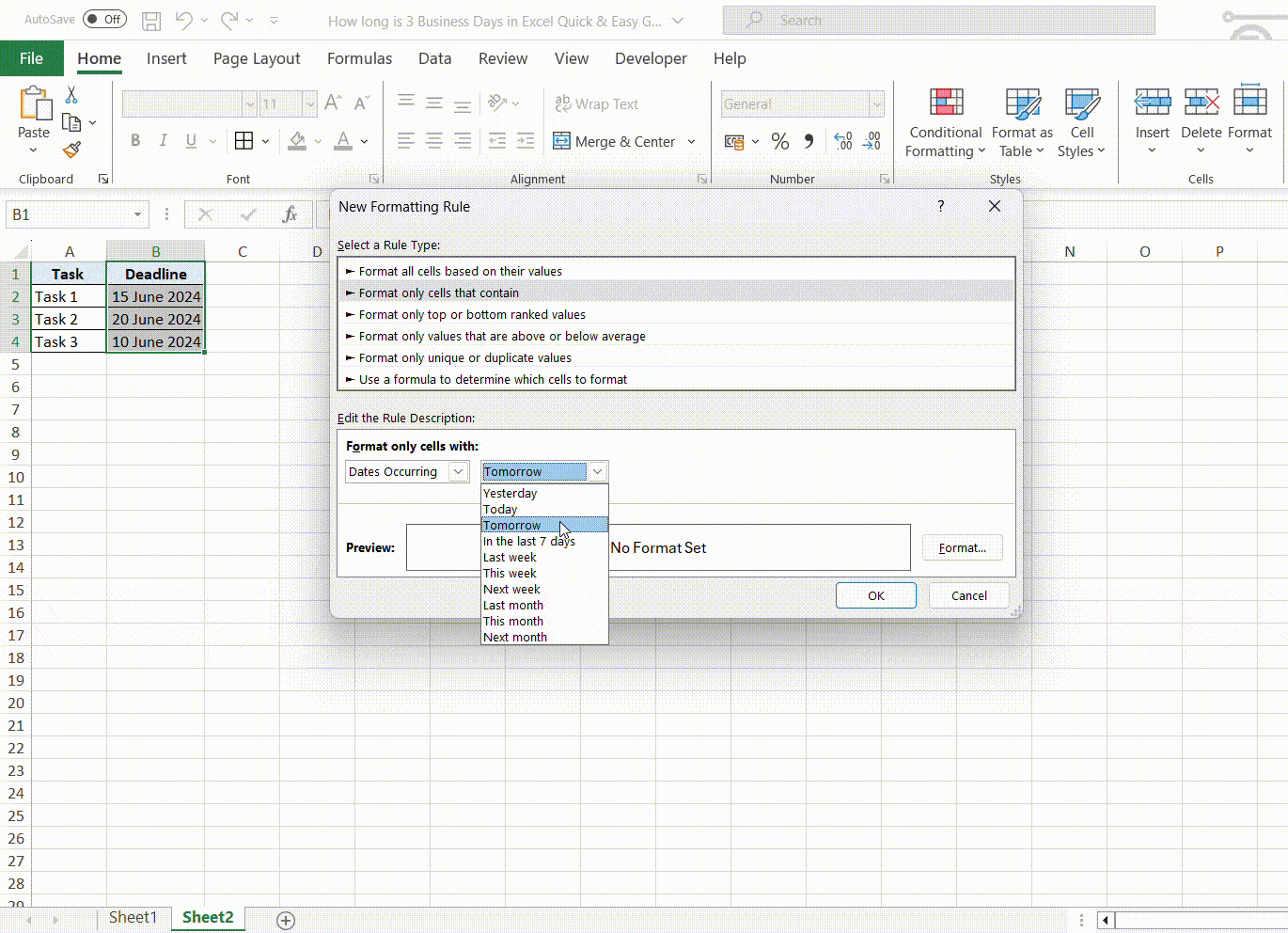Understanding business days is essential for effective project planning and time management. Unlike regular calendar days, business days exclude weekends and public holidays, reflecting the operational days of businesses. Microsoft Excel serves as a powerful tool in managing these days with functions that streamline the calculation of workdays, ensuring precise scheduling and efficient project timelines. In this guide, we will cover the steps to calculate how long is 3 business days in Excel.
Key Takeaways:
- Business Days Definition: Business days exclude weekends (typically Saturday and Sunday) and public holidays, focusing on the operational days when businesses are open.
- Excel’s Time Management Tools: Excel offers functions like WORKDAY and NETWORKDAYS to calculate business days, helping avoid manual errors and saving time.
- WORKDAY Function: This function adds or subtracts a specified number of working days from a start date, excluding weekends and optionally holidays, using the syntax WORKDAY(start_date, days, [holidays]).
- NETWORKDAYS Function: NETWORKDAYS calculates the number of business days between two dates, excluding weekends and holidays, using the syntax NETWORKDAYS(start_date, end_date, [holidays]).
- Handling Custom Weekends and Holidays: The WORKDAY.INTL and NETWORKDAYS.INTL functions allow for the customization of weekend days and the inclusion of holiday lists, accommodating different business schedules and international project timelines.
Table of Contents
Introduction to Business Days in Excel
Understanding Business Days
Business days are the heartbeat of the corporate world. Unlike regular calendar days, they exclude weekends—traditionally Saturday and Sunday—and public holidays. When you’re setting deadlines, scheduling meetings, or planning projects, it’s the business days that count. They are the days when businesses are typically open and operational.
The Vital Role of Excel in Time Management
Excel acts as a strategic ally in managing time with its plethora of features designed to track, calculate, and analyze dates and times. It helps you avoid the manual tallying of days, which is both time-consuming and prone to error. Instead, you can focus on the bigger picture, knowing that Excel has your back, ensuring your schedules and deadlines are pinpoint accurate, and dynamically adjustable with just a few clicks.
Breaking Down Excel’s Time Functions
The WORKDAY Function Simplified
The WORKDAY function is a time-saver, plain and simple. It’s designed to quickly add or subtract a specified number of working days to or from a start date. By default, it skips weekends and can optionally consider holidays too. Here’s what you need to know: the syntax is straightforward –
WORKDAY(start_date, days, [holidays])
When you feed in the start date and the number of business days you’re aiming for, Excel crunches the numbers, presenting you with a precise end date.
Harnessing the POWER of NETWORKDAYS
NETWORKDAYS steps in as a time-traveler’s compass, offering an insightful count of the working days between two dates, while automatically excluding weekends and holidays. It’s the perfect ally for understanding the actual scope of workdays within a project’s timeline. Here’s a glimpse into its prowess:
- Syntax:
NETWORKDAYS(start_date, end_date, [holidays]) - Example: To measure the workdays from April 1st to April 30th, excluding Easter Monday on April 17th, you’d input
=NETWORKDAYS("2023-04-01", "2023-04-30", "2023-04-17"), and discover there are 20 effective working days.
With NETWORKDAYS, planning and tracking your project timelines become an informed and strategic process, allowing you to allocate resources more efficiently and with confidence.
How Long is 3 Business Days
Step-by-Step: Using the WORKDAY Function
Calculating 3 business days from today is a breeze with the WORKDAY function. Here’s how you do it in just a few steps:
STEP 1: Open your Excel sheet and click on the cell where you want the result to appear.
STEP 2: Type in the function ‘=WORKDAY(‘.
STEP 3: Click on the cell that contains the start date or type it in manually, followed by a comma.
STEP 4: Enter the number of business days you want to add (in this case, 3).
STEP 5: Optionally, you can add another comma and select the range that contains any holidays you want to exclude, followed by closing the bracket.
STEP 6: Hit Enter, and voilà! The cell now displays the date that is 3 business days from the start date, taking into account weekends and any listed holidays.
Remember, Excel assumes weekends are Saturday and Sunday, so if you’re dealing with a different weekend schedule, you might need the WORKDAY.INTL function instead.
Traversing Weekends and Holidays with Ease
It’s smooth sailing around weekends and holidays with Excel’s WORKDAY function. If you’ve got a conventional Saturday/Sunday weekend and no holidays, it’s straightforward. Pop in your dates, and you’re good to go. But if you have holidays to dodge, here’s what you do:
- After selecting your weekend setup in the function-builder, you just click on the holidays option.
- Highlight the range of cells that list your holiday dates, and Excel will tally around them seamlessly.
For non-standard weekends, though, the WORKDAYS.INTL function will be your guiding star, allowing you to define which days to treat as weekends using customizable numeric codes. With this powerful tool, whether your week includes a leisurely Friday, a working Saturday or every day is a grind, Excel’s got your calendar covered.
=WORKDAY.INTL(start_date, days, [weekend], [holidays])
Weekend number values indicate the following weekend days:
- 1 or omitted – Saturday, Sunday
- 2 – Sunday, Monday
- 3 – Monday, Tuesday
- 4 – Tuesday, Wednesday
- 5 – Wednesday, Thursday
- 6 – Thursday, Friday
- 7 – Friday, Saturday
- 11 – Sunday only
- 12 – Monday only
- 13 – Tuesday only
- 14 – Wednesday only
- 15 – Thursday only
- 16 – Friday only
- 17 – Saturday only
Dive deep into the capabilities of WORKDAY.INTL with these advanced scenarios:
- Rotating Shifts: Perhaps you manage a team with a rolling shift pattern. WORKDAY.INTL can leapfrog over their unique “weekends,” keeping staff rosters in check.
- Cross-Border Projects: If your project spans countries with different weekend days, this function is pivotal in navigating those complexities.
- Custom Fiscal Calendars: Tailor WORKDAY.INTL to respect your company’s specific fiscal calendar, ensuring financial reporting aligns with internal periods.
These uses of WORKDAY.INTL is proof that, with the right Excel tools, even the most intricate time management tasks become manageable.
Practical Examples for Real-World Scenarios
Scheduling Project Deadlines Like a Pro
Picture this: you’re tasked with orchestrating a project that has a series of critical deadlines. With Excel’s WORKDAY function, you pinpoint exact due dates for each milestone, setting a clear path toward the finish line. Here’s your game plan:
- Define each phase’s starting point and duration in business days.
- Use WORK’s seamless calculation to leap over weekends and holidays effortlessly.
- Share the schedule with your team, keeping everyone in sync and on track for project success.
Before you know it, you’ve evolved from deadline-juggler to deadline-master, orchestrating your team’s effort with precision and poise.
Managing Payment Due Dates with Precision
When dealing with invoices and payments, timing is everything—making the WORKDAY function your trusty sidekick. Input your billing date, tack on the payment terms (say, “net 3 business days”), and Excel will deliver the due date with laser precision.
By deploying this simple method, you’ll ensure:
- Timely billing cycles to maintain cash flow.
- Clear-cut due dates for clients to follow.
- Minimized confusion with holidays and weekend exclusions naturally factored in.
Aligning your accounts receivable with the WORKDAY function transforms your financial workflow into an efficient, fuss-free operation.
Tips for Avoiding Common Mistakes
Common Pitfalls When Using Time Functions
Even seasoned Excel navigators might find themselves tripping up with date functions from time to time. Watch out for these common stumbles:
- Missteps in Syntax: Excel functions are picky about structure. Ensure you’re using commas to separate each part of the function and wrapping text dates in quotes.
- Overlooking Custom Weekends: The default weekend days are Saturday and Sunday. If yours are different, you might be adding extra days unintentionally. Double-check your settings or use the WORKDAY.INTL function.
- Neglecting Holidays: Failing to account for holidays can lead to skewed timelines. Always include a complete list of holidays relevant to your project or business context for an unerring schedule.
Avoid these pitfalls, and you can trust Excel to keep your dates on the straight and narrow.
Ensuring Accurate Results Every Time
Accuracy is the holy grail when it comes to date calculations in Excel, and you can achieve it consistently by following these steps:
- Double-Check Dates: Make sure all dates are entered in a format Excel recognizes. Quick tip: use the DATE function to avoid ambiguity (e.g.,
=DATE(year, month, day)). - Verify Holiday Lists: Your holiday list should be comprehensive and up-to-date to reflect any changes in observance.
- Test Your Formulas: On first use, or when modifying, test your formula with known outcomes to assure it’s functioning as expected.
- Use Named Ranges: For clarity and ease of use, define a named range for your list of holidays, so referring to it becomes error-proof.
- Validation Rules: Set up data validation for date entry cells to prevent incorrect date formats from being accepted.
By meticulously following these practices, you can steer clear of errors and ensure that your results are trustworthy each and every time.
Errors when using WORKDAY or NETWORKDAYS
To fix errors when using WORKDAY or NETWORKDAYS:
- Check date formats: Ensure all dates are in a recognized Excel format.
- Validate arguments: Confirm that the “days” parameter is numeric.
- Review holiday list: Ensure it consists of actual date values.
- Adjust for custom weekends: Remember to use NETWORKDAYS.INTL or WORKDAY.INTL for non-standard weekends.
Rectify these areas and your functions should work error-free.
Automating Your Date Calculations
Leveraging Conditional Formatting for Clarity
Leverage the visual power of Conditional Formatting in Excel to transform how you view approaching or past deadlines. Imagine your project timeline shining in a spectrum of colors, where each hue tells a different story about your deadlines, making it incredibly swift to spot what needs your attention.
Here’s your shortcut to clarity:
STEP 1: Select the cells containing deadlines.
STEP 2: Head over to the ‘Home’ tab, and choose ‘Conditional Formatting’, then ‘New Rule’.
STEP 3: Pick ‘Format cells that contain’, followed by ‘Dates Occurring.
STEP 4: Play with the possibilities—maybe you want ‘tomorrow’ in blue or ‘in the last 7 days’ in orange? Finally, define your format—the boldness of text; the warmth of colors.
This strategy not only gives your spreadsheet aesthetic appeal but dramatically ups its practicality, ensuring you’re always a step ahead of your schedule.
FAQs About Calculating Business Days in Excel
What Defines a Business Day in Excel?
A business day in Excel strictly refers to any day of the week that is not a weekend or a public holiday. By default, Excel considers Saturdays and Sundays as non-business days, but you can customize these settings to align with your or your organization’s specific operating calendar. This flexibility is key when calculating deadlines and schedules that are tailored perfectly to your business needs.
How do I calculate 3 business days in Excel?
To calculate 3 business days from a start date in Excel, use the WORKDAY function. Enter =WORKDAY(start_date, 3) where start_date is the cell with your start date or the actual date. This will exclude weekends and can also exclude holidays if you specify them in the formula as an optional range.
Can Excel Account for Public Holidays in Business Day Calculations?
Absolutely, Excel can factor in public holidays when you’re calculating business days. Just list the holidays in a column and reference that range within the WORKDAY or NETWORKDAYS functions to exclude those dates from your business day calculations, ensuring your timelines remain accurate and reliable.
Is It Possible to Calculate Business Hours Instead of Days in Excel?
Yes, you can calculate business hours in Excel, but you’ll need to set up a custom formula considering the start and end times of a typical workday, alongside any breaks. There isn’t a direct built-in function for business hours, so a bit of creativity with date and time functions is necessary for accurate calculation.
How Do I Fix Errors When Using WORKDAY or NETWORKDAYS Functions?
To fix errors when using WORKDAY or NETWORKDAYS:
- Check date formats: Ensure all dates are in a recognized Excel format.
- Validate arguments: Confirm that the “days” parameter is numeric.
- Review holiday list: Ensure it consists of actual date values.
- Adjust for custom weekends: Remember to use NETWORKDAYS.INTL or WORKDAY.INTL for non-standard weekends.
Rectify these areas and your functions should work error-free.
John Michaloudis is a former accountant and finance analyst at General Electric, a Microsoft MVP since 2020, an Amazon #1 bestselling author of 4 Microsoft Excel books and teacher of Microsoft Excel & Office over at his flagship MyExcelOnline Academy Online Course.

